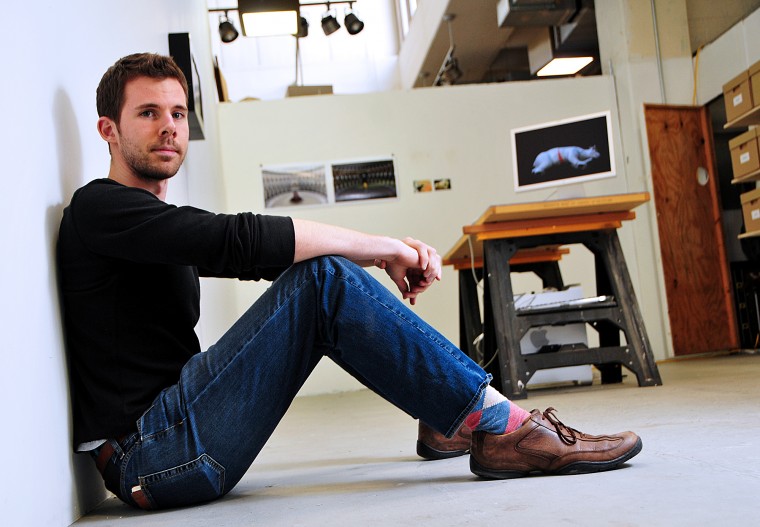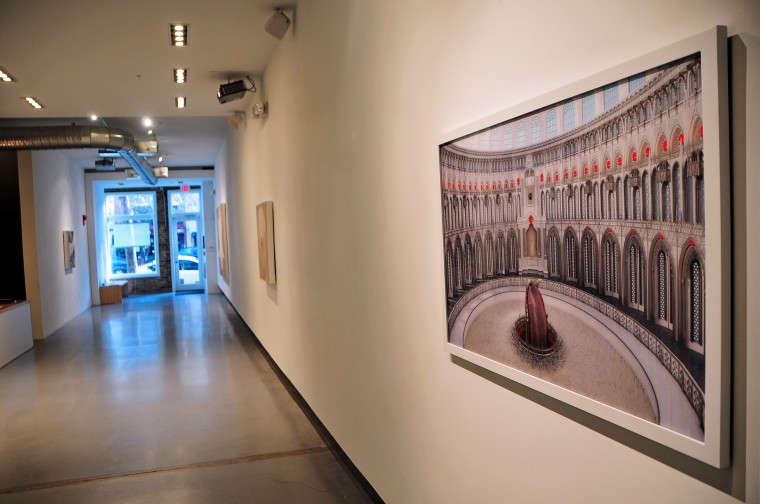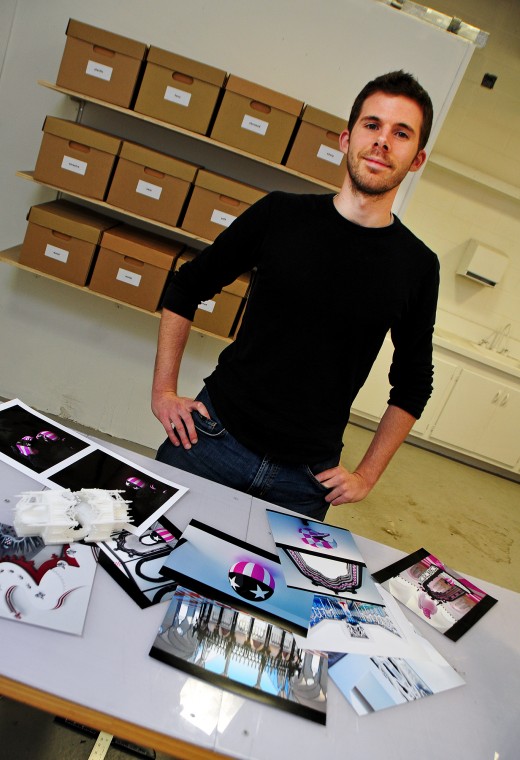Jonathan Monaghan used to dream big about one day using his computer graphic skills to work for Pixar, but he decided animating someone else’s ideas wasn’t his style.
“I wanted to work on my ideas,” he said. “I didn’t want to work on other people’s ideas.”
Monaghan, a third-year graduate student in studio art, recently showcased his work at the Hamiltonian Gallery, a Washington museum that features budding artists in the metropolitan area. The exhibit, titled “Life Tastes Good in Disco Heaven,” a twist on a Coca-Cola advertisement and a Lady Gaga song, was on display from Sept. 18 to this past Saturday. It featured computer-generated graphics Monaghan created using the same tools animators use in 3-D animated films and commercials.
One of the prominent pieces of Monaghan’s show is a three-minute video that depicts a polar bear slowly dying. Although it appears gloomy at first sight, the piece, titled “Life Tastes Good,” is actually meant to be a play on the various roles polar bears hold as symbols in commercialism, politics and nature, Monaghan said.
“I just think it’s funny that a polar bear was once a symbol for the Coke company and now it’s a symbol for climate change,” he said. “This work has entered our cultural vocabulary. It’s part of our cultural identity.”
While the piece may look like it is bursting with political commentary, he said his art is just meant to make people think about things in a different context.
“If I wanted to say [something], I would say it,” he said. “You have to contemplate that and all of the associations you make when you see these images.”
Monaghan, who has a background in computer graphics, said he originally wanted to work in special effects or animation but changed his mind after seeing artists such as Matthew Barney, who create their own art using film media.
Many computer graphics artists experiment with various programs, but Monaghan chose to stick with 3D Studio Max, the program used by companies such as Pixar.
For some of his pieces, Monaghan draws inspiration from various elements of life, including governmental institutions, pop stars and Christianity because of their constant presence in many people’s lives.
In past projects, he has intertwined parts of animals’ bodies with the physical structure of Gothic-style buildings. He adds a little twist to the traditional architectural style by designing his buildings so they are ripe with wild patterns and color.
Monaghan said he hopes by juxtaposing many seemingly unrelated things together, he’ll force his viewers to consider their relationship with those objects, an idea that has prevailed throughout his art career.
“I’m interested in a sort of synthesis versus nature; I like putting these animals in very strange, artificial environments,” he said. “It talks about the ability to change nature. Creating these crazy lifeforms is what I’m interested in.”
Art department Chairman John Ruppert said what makes Monaghan’s work enticing is his ability to present a number of ideas in a single computer animation.
“I think he has a unique perspective and a combination of his interest in animation and computer media and his ideas about culture come together in a way that’s very unique.”
Hamiltonian Gallery Director Jacqueline Ionita, who is also Monaghan’s mentor, said his art sometimes overwhelmed onlookers with its numerous themes, but after developing his skills with the gallery’s fellowship program, which aids young artists for two years, his work presents his ideas in a clear yet exciting way.
“The scenes, the landscapes he makes are slick and opulent,” Ionita said. ” … Sometimes it seduces you, sometimes it grosses you out.”
“There’s a coolness in the way that he sees the world,” Ruppert added. “But at the same time he’s infatuated with the elaborated complexity of baroque architecture, classical architecture, European churches and brings it forward into our time and layers a coolness too.”
Monaghan’s work will be featured at George Mason University next week.
korkut at umdbk dot com
Using animation software, Jonathan Monaghan creates artwork that incorporates a wide range of images, using symbolism to connect differing ideas.






